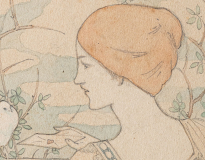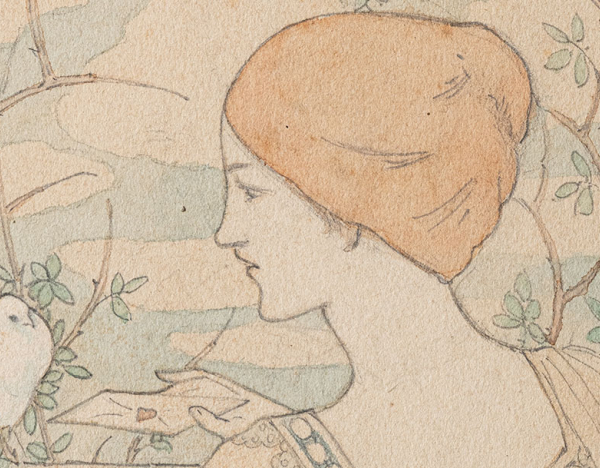Emile Delrue
( 1878-1928 )
Biography
Born in Antwerp in 1878, Émile Delrue was a Belgian artist whose work, long overlooked, is now attracting renewed interest. He was a member of the artistic circle De Scalden, founded in 1889 in his hometown, which brought together painters, decorators, architects and craftsmen with the aim of renewing the applied arts at the end of the 19th century.
Delrue developed a distinctive visual universe, at the crossroads of Symbolism, Flemish Renaissance, British Pre-Raphaelitism and Art Nouveau, embracing ornamental codes and a quest for idealized beauty. He is notably the author of the painted ceiling of the Ruys jewelry store in Antwerp (1923), executed in an elegant allegorical style. It is also likely that he designed the furniture and interior decoration of the shop.
His work on paper, mainly small-scale drawings, watercolors and gouaches, is characterized by great precision, refined composition, and an imagination steeped in medieval visual culture. He died in 1928, leaving behind a rare and valuable body of work.
93400 Saint-Ouen sur Seine

